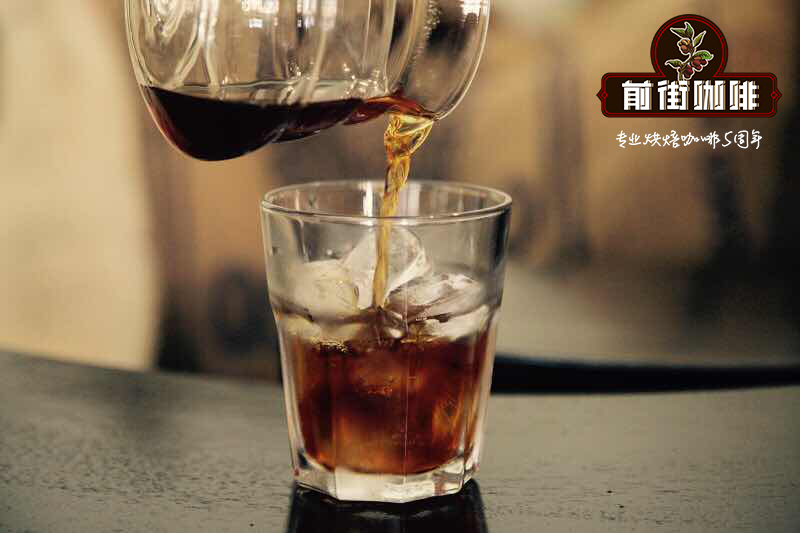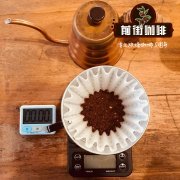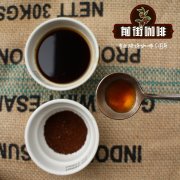Costa Rican washing process coffee how to wash flavor characteristics is what hardness how

Professional coffee knowledge exchange more coffee bean information please follow the coffee workshop (Wechat official account cafe_style)
Costa Rican water washing
Name
Tarazhu Diamond Hill
Alpine extremely hard bean washing
Costa Rica Tarraz ú Montanas Diamante
Water content: 10.6% density: 1.27g/cm3 water activity: 0.60
Flavor description: baked almonds, cream, toast, sweet sugar, solid and full-bodied taste, good overall balance
Tara bead
SHB of Shepherd Boy Manor
Costa Rica Tarrazu La Pastora SHB
Water content: 9.6% density: 1.27g/cm3 water activity: 0.53
Flavor description: green apples, fried almonds, cream corn, jujube and caramel
Washing method: 1, select beans: put the harvested fruit in a water tank and soak for about 24 hours. At this time, ripe fruit will sink, while immature and overripe fruit will float up and can be removed.
2. Remove the pulp: use a machine to remove the skin and pulp, leaving only the coffee beans wrapped in the endocarp. At this time, there is a layer of mucous membrane on the outside of the beans, and the process of washing is to wash this layer of mucous membrane.
3, hair alcohol: the adhesion of the mucosa is very strong, and it is not easy to remove. It must be placed in the slot for about 18-36 hours to make it alcohol and decompose the mucosa. There are two methods of fermentation, namely wet hair alcohol and dry hair alcohol, as the name implies, the former adds water, the latter does not add water. In the process of producing alcohol, the seeds and internal pulp will produce special changes, which is one of the steps that most affect the flavor of coffee. Some farms add hot water or alkanolins to speed up the production of alcohol, which has a negative impact on quality and is not popular with selected coffee lovers.
4. Washing: farms that use the washing method must build washing ponds and be able to introduce an endless supply of live water. During the treatment, the finished beans are put into the pool and passed back and forth, using the friction of beans and the power of running water to wash the coffee beans until smooth and clean.
5, drying: after washing, the coffee beans are still wrapped in the pericarp with a moisture content of 50%. They must be dried to reduce the moisture content to 12%, otherwise they will continue to be mellow, moldy and rotten. The better treatment is to use sunlight to dry, although it will take 1-3 weeks, but the flavor is very good and very popular. In addition, machine drying is used in some places, which greatly shortens the processing time and makes the flavor not as good as that of sun-dried coffee.
6, shelling: dried beans can be stored in a warehouse, or handed over to the factory for shelling to remove endocarp and silver film.
7, selection and grading: like tanning hair, washed coffee also has a process of picking and grading, which is used to remove defective beans and ensure better quality, which is then handed over to exporters to sell around the world.
The classification of Costa Rican coffee beans is quite simple, according to the elevation of the coffee garden, a total of seven grades / names / abbreviations / elevations (feet):
1 extremely hard beans (SHB) more than 4500.
2 hard beans (HB) 4000 Murray 4500.
3 semi-hard beans (SH) 3500 Murray 4000.
4 Super high-grade washed beans (EPW) 3000murmur3500.
5 Superior washed beans (PW) 2500 Murray 3000
6 Super good washed beans (EGW) 2000 Murray 2500.
7 good washed beans (GW) below 2000.
END
Important Notice :
前街咖啡 FrontStreet Coffee has moved to new addredd:
FrontStreet Coffee Address: 315,Donghua East Road,GuangZhou
Tel:020 38364473
- Prev

Effect of Coffee extraction temperature on extraction what is the performance of insufficient extraction and excessive extraction
Professional coffee knowledge exchange more coffee bean information Please pay attention to the coffee workshop (Wechat official account cafe_style) insufficient extraction and excessive extraction two problems of insufficient extraction, that is, the flavor of coffee is not fully extracted by water, at this time if it is espresso, the color will be lighter and more sour. If you get rid of the phenomenon of rough deficiency, the taste will often be sour. Excessive extraction of coffee
- Next

How the Water temperature of hand-made Fine Coffee affects Fine Coffee
Professional coffee knowledge exchange more coffee bean information please follow the coffee workshop (Wechat official account cafe_style) how does the water temperature affect coffee? Paul: "the water temperature will directly affect the release of different substances during cooking." There are many chemical reactions during cooking. Water will extract chlorogenic acid, acetic acid, malic acid, caffeine, oil and so on. These substances will also be at different time points.
Related
- What is the meaning of lactic acid fermentation with coffee bean treatment?
- How to judge the state of foam by sound?
- How does the latte pull out the unicorn pattern? Come to get for a little trick to improve the flower pull!
- Will flower pulling affect the taste of the latte?
- Do you know the history of coffee?
- The difference between honey treatment and sun washing what is raisin honey treatment?
- What kind of milk can a novice use to make coffee foam to keep the foam longer? The correct method and skills of milking tutorial sharing
- Why do washed coffee beans taste sour? Flavor characteristics of washed Coffee
- Introduction to the skill of how to practice the size and height of water injection around the circle of hand-brewed coffee
- How do beginners practice coffee flower drawing from scratch?

